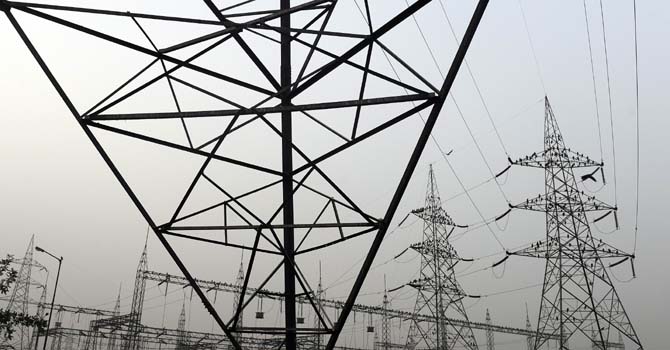LONDON: The chances of a sharp drop in oil prices similar to the record one-day fall on May 5 last year are increasing sharply as the market becomes locked into a classic price spike.
By close of business on Feb. 14, hedge funds and other money managers were running 7.3 long futures and options positions linked US crude prices (308 million barrels) for every short position (42 million barrels), according to commitments of traders data published by the US Commodity Futures Trading Commission (CFTC).
Investors have not been this long of U.S. crude futures and options since July 2011, when longs were still liquidating their positions in the aftermath of the May 5 “flash crash”. The flash crash saw prices fall by more $11 per barrel within a single day, equivalent to more than four standard deviations.
Heading into the crash, money managers were running long positions amounting to around 400 million barrels of crude, with a ratio of 10 long positions for every short, and front-month WTI prices trading around $109.
The parallels with the current position are striking. Money managers now have long positions amounting to 300 million barrels, up from 250-280 million through last autumn, in a long/short ratio of 7.3:1 compared with a more normal ratio of 3:1 or less, and flat prices are around $105 per barrel, just $4 short of the level before last year’s flash crash.
Predicting the timing and level of market reversals is impossible. But all the conditions for a price spike and subsequent collapse are now in place.
Volatility Ahead
Price spikes and crashes are most likely to occur when the normal diversity of opinions in a market is replaced by near unanimity about the direction of prices, as Professor Didier Sornette explained in his seminal 2003 book “Why Stock Markets Crash: Critical Events in Complex Financial Systems”.
Diverse views lend markets liquidity and stability, ensuring a rough balance between buyers and sellers near current price levels. But when one view comes to predominate, and everyone tries to trade in the same direction, liquidity falls and the risk of big price discontinuities rises sharply.
In 2011, the supply disruption caused by Libya’s civil war, coupled with production losses in the North Sea and Azerbaijan, a big boost to fuel demand after the Fukushima earthquake, a stream of positive economic news from the United States, and continued support from the second-round of large-scale asset purchases by the Fed (QE2) all came together to convince investors that oil prices could only go one-way: up.
Sure that prices must continue rising, investors raised their long positions in US crude from around 320 million barrels to 400 million between February 2011 and the start of May, while cutting short positions from 80 million to less than 40 million, stretching the long/short ratio from less than 4:1 to peak at more than 10:1.
Something similar appears to be occurring again. Sanctions are curbing Iran’s exports; production has been lost from South Sudan, Yemen and Syria; economic news from the United States is positive; the Fed has indicated continued support by promising to postpone rate rises until 2014 or beyond; and the Bank of England, European Central Bank and People’s Bank of China are all providing more liquidity and stimulus.
Once again, everyone is trying to trade the same way, cutting liquidity and substantially increasing the risk of a sharp reversal.
The reversal process has already started. Prices for both US crude and North Sea Brent have entered the “danger zone” above $100 per barrel identified by the International Energy Agency. Recent price rises, if sustained, are likely to harm the recovery underway in the United States and intensify the slowdown in Western Europe.
As last year, the full impact will only become evident with a delay. So in the early stages, it will appear economies are absorbing rising costs without much harm. But if price rises are sustained, the impact on consumer confidence and spending will be magnified and eventually slow global growth, restoring balance to the oil market.
It is impossible to say whether prices will peak in February, March, April or even later, and whether the rally will crest at $120, $130 or even $150 per barrel (Brent or WTI). The course of a price spike is fundamentally indeterminate. If it were not, the spiking process could not get underway.
But it is possible to offer general observations. Price moves accelerate towards the peak for a spike (or trough for a crash) as liquidity dries up and the market becomes “locked” in bullish or bearish mode, driving contrarian traders to the sidelines.
Spikes and crashes also become inherently more unstable the longer they persist and the more stretched valuations becomes.
On all these measures, the risk of both a sharp further rise in oil prices, and an eventual sharp reversal, is increasingly substantially.
John Kemp is a Reuters market analyst. The views expressed are his own.



